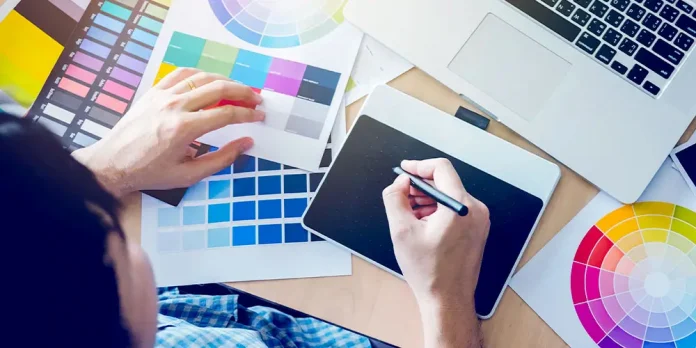A common question graphic designers are often asked by their clients is, what exactly do you do? While this may seem like an easy question to answer, the reality is that graphic design can actually encompass many different roles and responsibilities depending on what type of work you do. Because of this, it’s important to make sure you understand the difference between some of the common types of design before moving forward with your new project.
Below, we’ll look at some of the most popular forms of graphic design and help you understand how they differ from one another.
Graphic design is an important skill today
We live in a society that is highly visual. People are bombarded with pictures, logos, and advertisements everywhere they go—and it’s not just traditional media anymore. In today’s fast-paced society, things need to be instant, visually appealing, and convenient. This is where graphic design comes in: its purpose is to organize content into an attractive visual message while conveying a message efficiently. Without it, our world would be rather messy looking!
But even though everyone uses images on a daily basis, many people do not understand what goes into making them. They may know that someone designs these images, but they may have no idea what goes into designing them or how graphic designers make their living. Read on for more information about becoming a professional graphic designer!
If you love working with graphics and want to learn more about becoming a professional designer, then you should enrol in college for a degree program in graphics design or illustration.
It’s easy to enter this field
Many people have an excellent eye for design, and many of them don’t have an art degree. However, to work as a graphic designer, you need to understand design fundamentals (the way things look), layout principles (the way things are presented) and typography (letters and words). You can hone these skills by taking night classes or workshops at a local community college or on your own time.
A solid foundation will make it easier for you to learn software like Adobe Illustrator, InDesign or Photoshop. Regardless of how well-rounded your skill set is when you enter your first job interview, it’s important that employers know you can do more than lay out logos and create a letterhead.
There are many ways to learn it
Although graphic design can certainly be taught in a classroom, you don’t have formal education to become a successful designer. In fact, many of today’s most popular designers learned on their own through trial and error and advice from industry experts.
Want to get started learning how to design? Consider taking a basic class or checking out some online resources—no matter where you learn, there will always be room for improvement! And if you want to pursue a career as a designer, having formal training is absolutely essential. (After all, no one wants an amateur designing their company logo.)
A degree or certification is not required
In many countries, it is illegal to practice graphic design without a degree or certification. However, some colleges and universities that offer these design programs do not teach their students about graphic design. Instead, they focus on promoting arts and crafts.
As a result, there are few professional designers available in today’s job market. If you want to become a designer, you will need to be persistent and keep looking for opportunities. You can also find work as an assistant designer until you have enough experience to become independent.
A designer must know how to use Adobe Photoshop: While Adobe Photoshop is one of the most popular graphics editing tools, it isn’t necessary for every type of design project. For example, if you want to create logos or simple illustrations, you can use simpler software like GIMP or PaintShop Pro instead of spending money on something more advanced like Photoshop.
It’s also important for designers who use Photoshop regularly to remember that there are other options out there, too—such as online photo editors like Pixlr—that don’t require any extra cost beyond your internet connection!
It’s great for self-employment
Whether you’re looking to make a career change or just want to earn some extra money on nights and weekends, graphic design might be a great fit. An experienced designer can work from home, using a computer as their primary tool. And many companies are more than happy to take on freelance designers for part-time contracts, so you won’t have trouble finding gigs if you prefer that type of set-up.
To get started, try reaching out to local businesses with an offer to create some flyers or brand logos at a reduced price. Many small shops don’t have professional design staff on board and are willing to pay someone for quality work—especially if they like your portfolio!
Schools offering courses are everywhere
In all, more than 5,000 post-secondary institutions and programs in North America offer design courses. Many of these schools are private colleges that only offer one or two courses in graphic design. This is how it works: you can take a short graphic design course during your summers (and save money).
If you enjoy it and have some talent, you can major in it as a Bachelor’s degree at a well-known university like Syracuse University (NY) or San Jose State University (CA). You will also be able to get an Associate Degree at any 2-year school. A great way to see if you have what it takes is to volunteer for social or non-profit organizations that need help with their visuals
Conclusion
A lot of people have an interest in graphic design, but don’t have any idea how to go about getting into it. With so many great options and varieties available, there’s no reason not to get started right away! What are you waiting for? Get out there and get your creativity flowing today!


